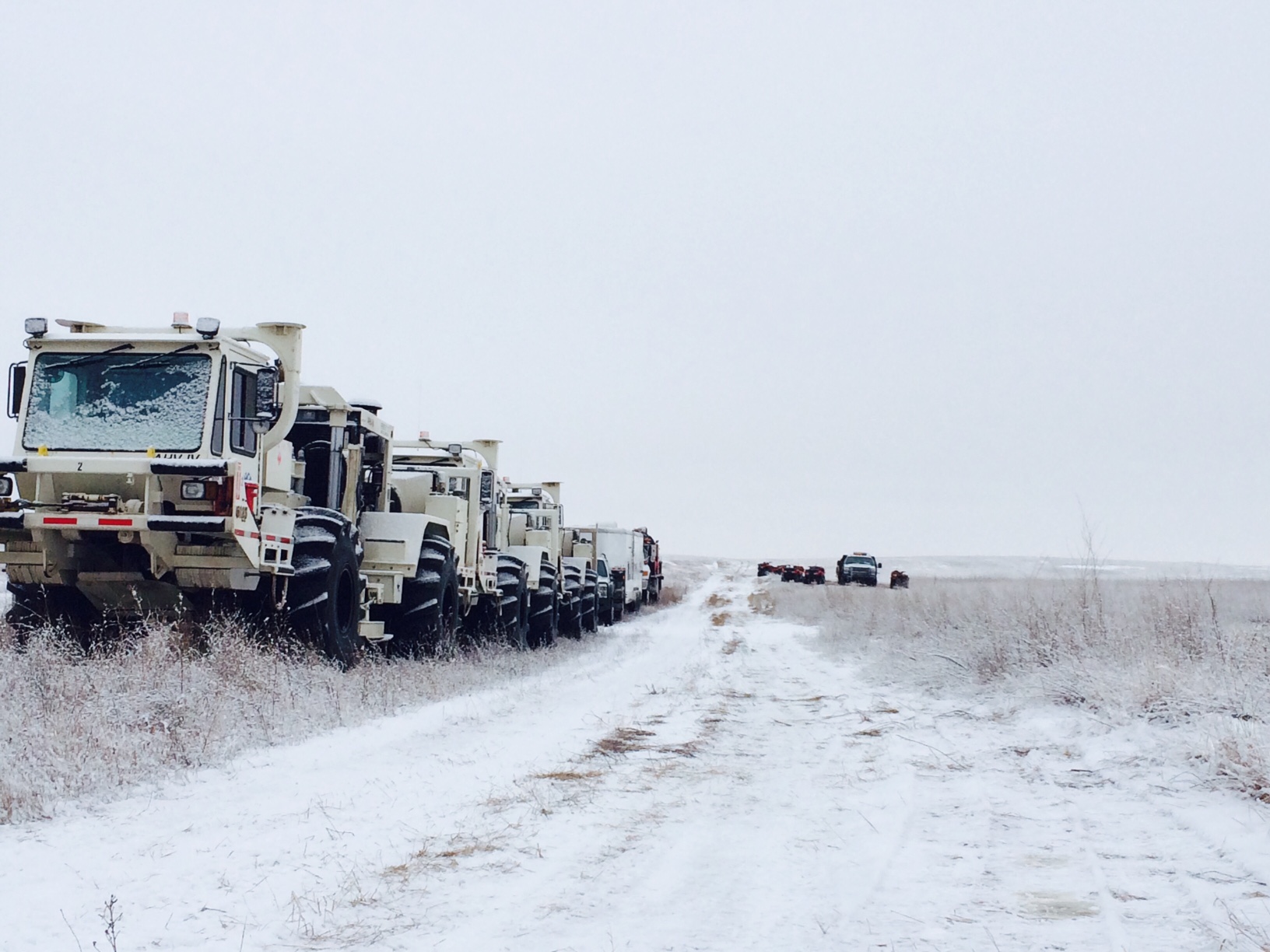This week, the Aquistore site is busy with the deployment and acquisition of three dimensional (3D) seismic over the injection area as well as a vertical seismic profile (VSP) around the injection well. Seismic imaging of the CO2 injected into the Aquistore well is a critical component of the monitoring program.
“Before injection started, our researchers developed a predictive computer model of where the CO2 would go in the formation,” says Don White, a geophysicist on the project and senior scientist with the Geological Survey of Canada. “The seismic images created by this week’s seismic tests will be compared with that model to see if the CO2 plume is following our predictions. Any noted differences will help improve the predictive model and indicate whether the CO2 is staying where we want. That’s important for regulators and companies who are responsible for storage.”
The Aquistore site has a 650 geophone permanent array to create three dimensional (3D) images of the injection location.
“In addition to the traditional sensors (geophones), a fibre optic cable running down the well and in a trench alongside the injection and observation wells is using distributed acoustic sensing (DAS) to help create subsurface images. From a technical point of view, we want to see how well this fibre optic technology can help us see what’s there, and whether it shows more detail than the geophones” notes White.
Geophysicist Rob Kendall, Vice President of Research and Special Projects at Tesla Explorations Limited, has been directing the seismic work at the Aquistore site this week and notes that many different industries are watching the results of Aquistore seismic testing closely.
Aquistore is simultaneously acquiring the VSP survey using an 80 level geophone string and a casing conveyed DAS fibre line. Right now, most oil wells requiring a VSP use a geophone string down hole.
“The running of geophones down a wellbore is often expensive and requires the suspension of other activities in the well whereas a casing-conveyed fibre line provides a permanent measuring tool over the life of the well. This is a technology of particular interest to oil and mining companies,” Kendall notes.
“As just one example, DAS could provide information on background seismicity, micro seismicity, and induced seismicity for horizontal wells conducting hydraulic fracturing, providing instant information without having to stop operations,” notes Kendall. “The different distributed acoustic sensors being tested at Aquistore may prove revolutionary not just for CO2 monitoring.”
PTRC is posting Twitter and Facebook updates throughout the week as seismic work progresses at the site. Follow us at @PTRC_SK, or at PTRC on Facebook.


